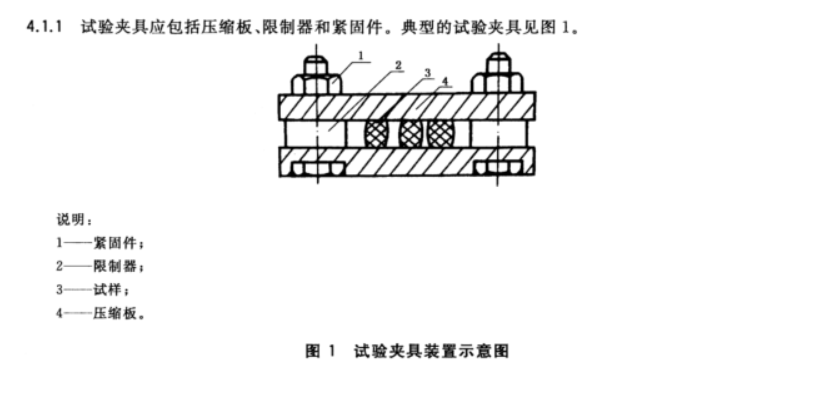







- Product Describe
-
Vulcanized Rubber Compression Deformation Apparatus
1. The compression plates consist of a pair of parallel, flat, high-gloss steel plates, with the specimen compressed between them. The surface roughness Ra of the compression plates should not exceed 1.6 µm.
- The compression plate should have: sufficient rigidity to ensure it does not deform under pressure, for which steel plates are recommended; and a sufficiently large size to guarantee that, when the specimen is compressed between the two plates, the entire sample remains fully contained within the plate area.
- The limiter provides the corresponding compression ratio.
- The shape and dimensions of the restrictor should ensure it does not come into contact with the compressed specimen. The recommended heights for the restrictor are (8 ± 0.02) mm, (7 + 0.02) mm, or (6 ± 0.02) mm; the selected restrictor height must meet the requirements for the specimen's compression ratio.
- Fasteners are screw devices composed of bolts and nuts.
6. Dimensions: The specimen is a cylinder with a diameter of (10 ± 0.2) mm and a height of (10 ± 0.2) mm. The height difference among specimens in the same group must not exceed 0.05 mm.
7. Sample Preparation: The sample should be directly vulcanized using a mold, ensuring its surface is smooth and perpendicular or parallel to each other. The sample must be free of bubbles, impurities, or any damage. Alternatively, the sample can also be cut from a vulcanized rubber sheet meeting the thickness requirements specified in 5.1 using a circular cutter with an inner diameter of (10.2 ± 0.02) mm. During the cutting process, the cutter edge may be lubricated with neutral soap solution, and the blade should be advanced slowly to minimize tapering of the diameter.
 Samples prepared using the different methods mentioned above may yield varying test results, making the results incomparable.
Samples prepared using the different methods mentioned above may yield varying test results, making the results incomparable.
Company Profile
Hebei Yinfeng Experimental Instrument Co., Ltd. is a high-tech enterprise dedicated to the research and development, production, and sales of experimental instruments. The company is headquartered in Hebei Province, relying on the strong industrial foundation and technological innovation resources in the Beijing Tianjin Hebei region. It is committed to providing high-precision and high reliability testing equipment and solutions for material testing, engineering quality control, scientific research experiments and other fields.




Customized Delivery Process
We provide customers with full-process services ranging from pre-sale consultation, customized solution design, equipment installation and commissioning to after-sale technical support.
Online Communication
Provide Custom Drawings
Merchant Quotation
Sign A Contract
Processing And Production
Packaging And Distribution
Confirm Receipt Of Goods
Successful Transaction
Previous:








GBT1683 Vulcanized Rubber Compression Set Test
If you need customized products, Contact US !
Category
Tag list
Request a Quote
We will contact you within one working day. Please pay attention to your email.
Related Products
Content update in progress







